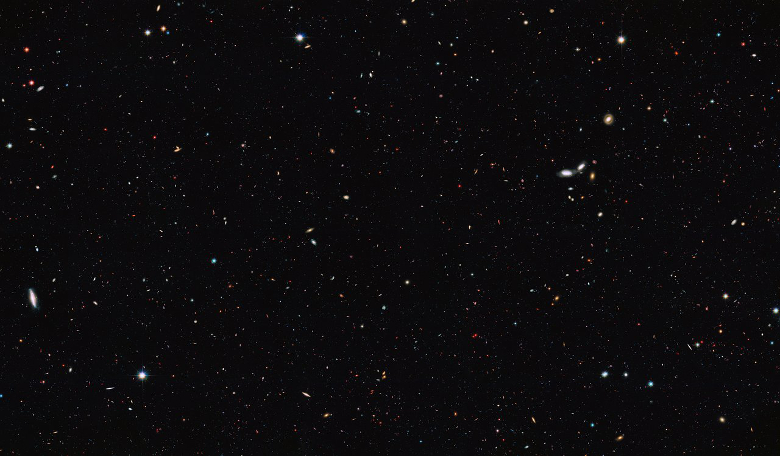One of the most fundamental questions in astronomy – how many galaxies the Universe contains – may be one step closer to being answered, as a recent census has reported that there are at least 10 times as many galaxies in the observable Universe as previously thought.
Ever since the mid 1990s when Hubble Deep Field images revealed a myriad of faint galaxies scattered in every direction, researchers have been trying to calculate their possible numbers and it has been estimated that around 100 billion galaxies populate the observable Universe[1]. Now, an international team of astronomers using data from the NASA/ESA Hubble Space Telescopes and other telescopes have shown that this figure is at least ten times too low.
To arrive at this new figure, the team, whose lead author on the research paper is Christopher Conselice from the University of Nottingham, UK, painstakingly converted deep space images from Hubble and data from his team's previous work, into 3D, in order to make accurate measurements of the number of galaxies at different times in the Universe's history.
To supplement the images, the team also used new mathematical models which allowed them to infer the existence of galaxies, which due to technical limitations cannot be observed by the current generation of telescopes in use today. The results were startling and the team realised that to make the numbers add up some 90% of the galaxies in the observable Universe are actually too faint and too far away to be seen; yet.
"It boggles the mind that over 90% of the galaxies in the Universe have yet to be studied. Who knows what interesting properties we will find when we observe these galaxies with the next generation of telescopes," explains Conselice about what implications these new results present.
Looking 13 billion years into the past, analysis of the data showed that galaxies are not evenly distributed throughout the Universe's history. In fact, it appears that there were a factor of 10 more galaxies per unit volume when the Universe was only a few billion years old compared with today.
So what has become of these galaxies then? Most of these galaxies were relatively small and faint, with masses similar to those of the satellite galaxies that surround the Milky Way, such as the Large Magellanic Cloud (LMC). These results therefore are strong evidence that a significant evolution has taken place whereby galaxies have merged together and drastically reduced their numbers in the process.
"This gives us a verification of the so-called top-down formation of structure in the Universe," explains Conselice. The findings also help solve an ancient astronomical paradox known as Olbers paradox[2] – why is the sky dark at night?
The team conclude that because the abundance of galaxies is so great, in principle, every point in the sky contains part of a galaxy. However, owing to a combination of factors, such as redshifting of light and absorption of light by intergalactic dust and gas, most of these galaxies are invisible to the human eye – even to modern telescopes – thus ensuring that the night sky remains mostly dark.
[1] The limited speed of light and the age of the Universe mean that the entire Universe cannot be seen from Earth. The part visible within our cosmological horizon is called the observable Universe.
[2] The astronomer Heinrich Olbers argued that the night sky should be permanently flooded by light, because in an unchanging Universe filled with an infinite number of stars, every single part of the sky should be occupied by a bright object. However, our modern understanding of the Universe is that it is both finite and dynamic -- not infinite and static.











